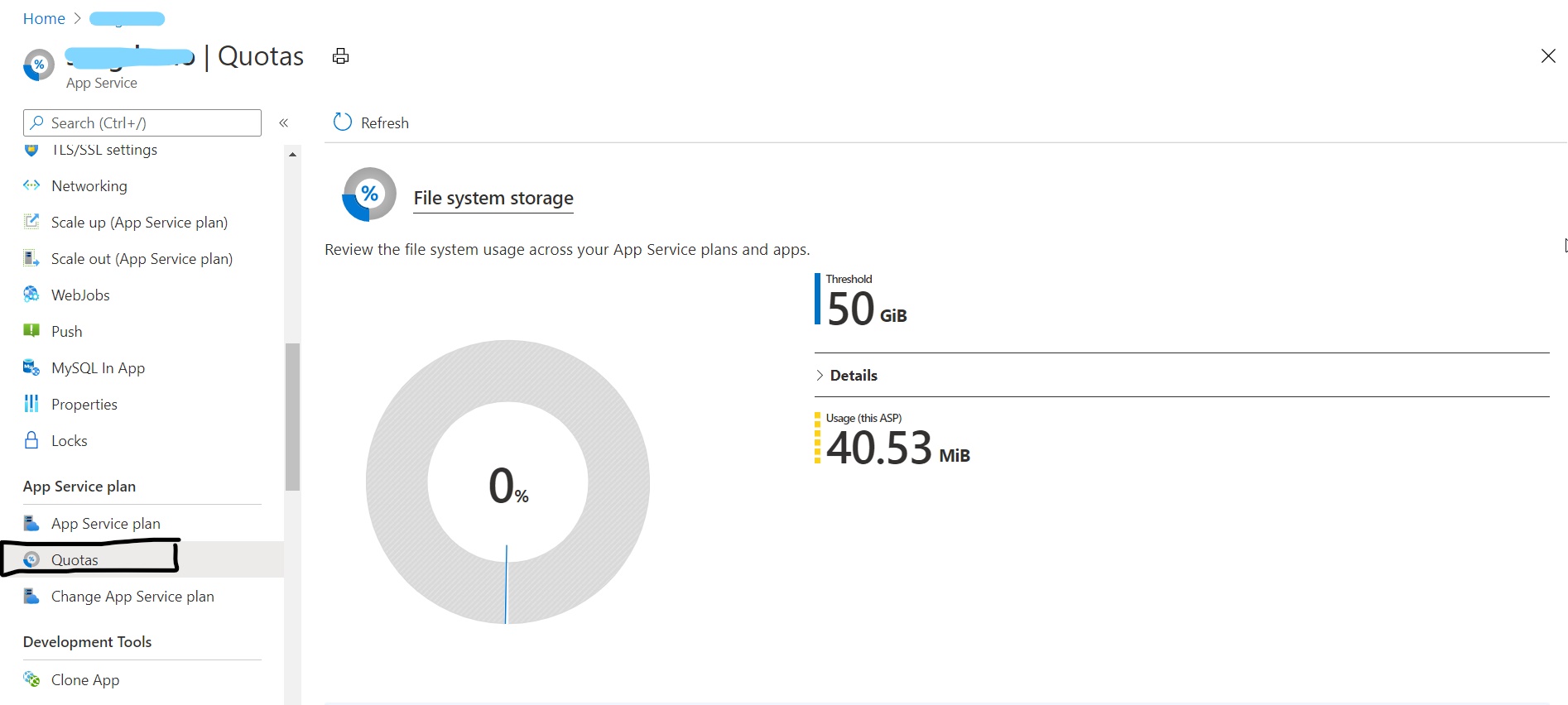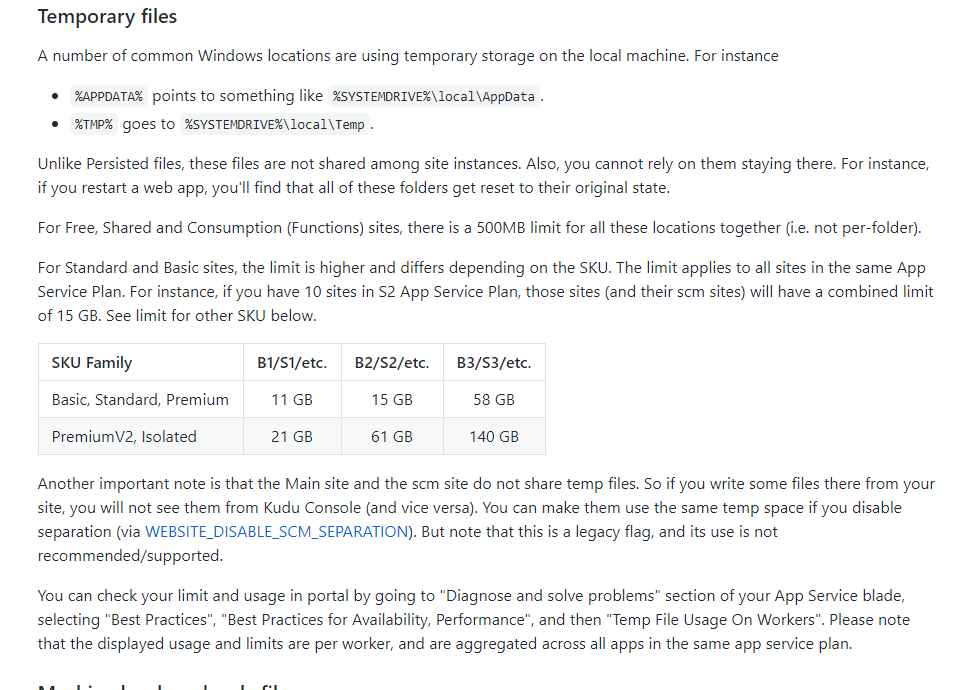Thanks for asking question! You may want to know that App Service is a service running on top of the Azure PaaS (platform as a service) infrastructure. As a result, the local drives that are "attached" to a virtual machine are the same drive types available to any worker role running in Azure. This includes:
• An operating system drive (the D:\ drive)
• An application drive that contains Azure Package cspkg files used exclusively by App Service (and inaccessible to customers)
• A "user" drive (the C:\ drive), whose size varies depending on the size of the VM.
So, Its important to monitor your disk utilization as your application grows. If the disk quota is reached, it can have adverse effects to your application. For example:
• The app may throw an error indicating not enough space on the disk.
• You may see disk errors when browsing to the Kudu console.
• Deployment from Azure DevOps or Visual Studio may fail with ERROR_NOT_ENOUGH_DISK_SPACE: Web deployment task failed.
(Web Deploy detected insufficient space on disk).
• Your app may suffer slow performance.
Also, its little tricky to figure out this issue as you may have multiple Web Apps in an App Service Plan. If one of the Web Apps is taking more disk space than the others, you may not be able to easily identify which Web App to investigate.
You can monitor the disk space under “Quotas” tab at the Web App level. Go to Web App -> Quotas -> you can see the File System Storage.

Also, try checking the App Service Plan quotas by going to App service plan and selecting Quotas. Additionally suggest you to check the application files in the D:\home\site\wwwroot from the Azure kudu tool (https://yoursite.scm.azurewebsites.net/) and available disk space on the Environment page. You may try increasing the pricing tier plan and see if that helps to resolve the issue.
Also, Please check below articles on this:
Azure App Service - What is taking my disk space for my Azure Web App ?
Review and manage your web site disk space in Azure
Disclaimer: This response contains a reference to a third-party World Wide Web site. Microsoft is providing this information as a convenience to you.
